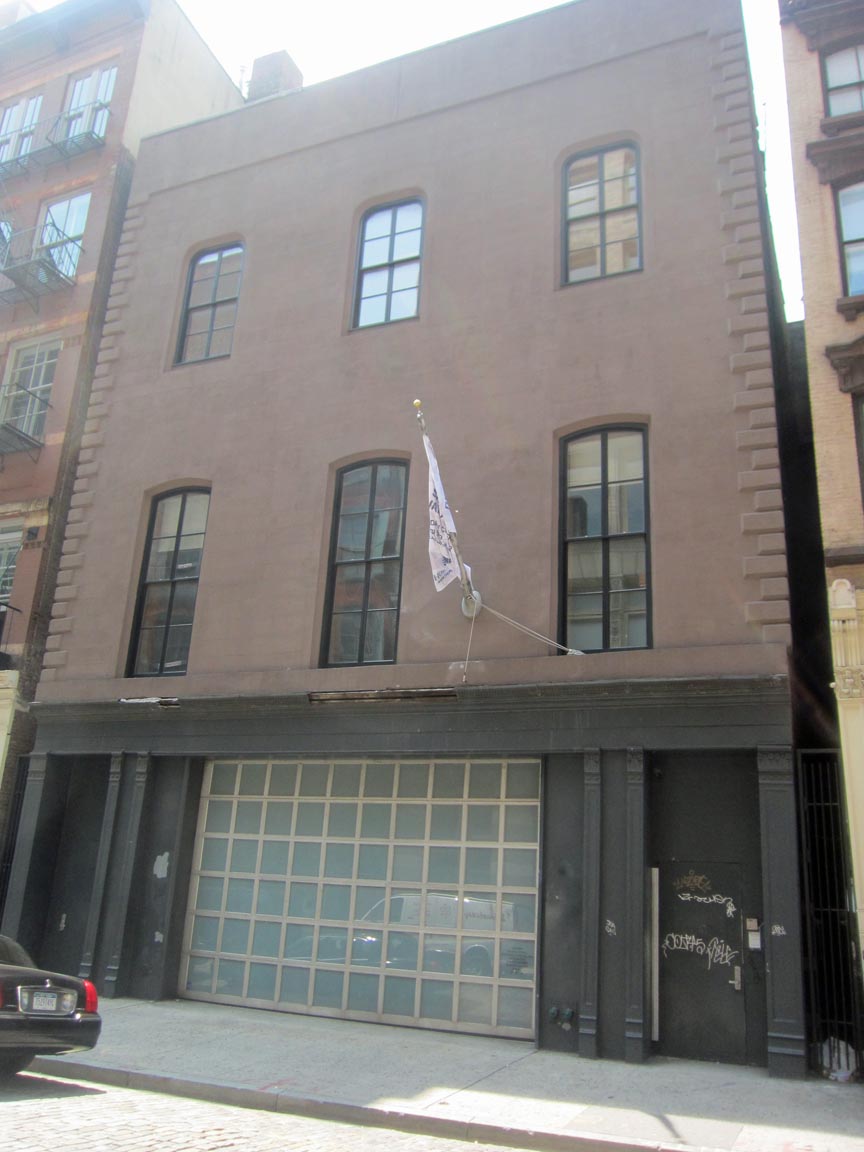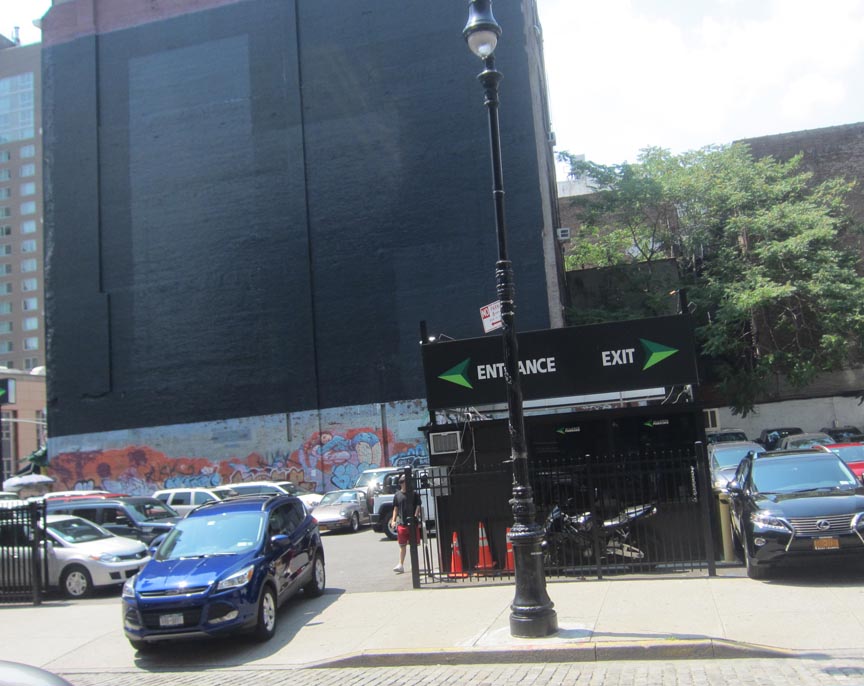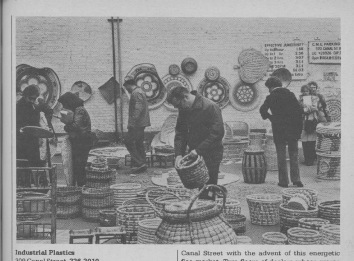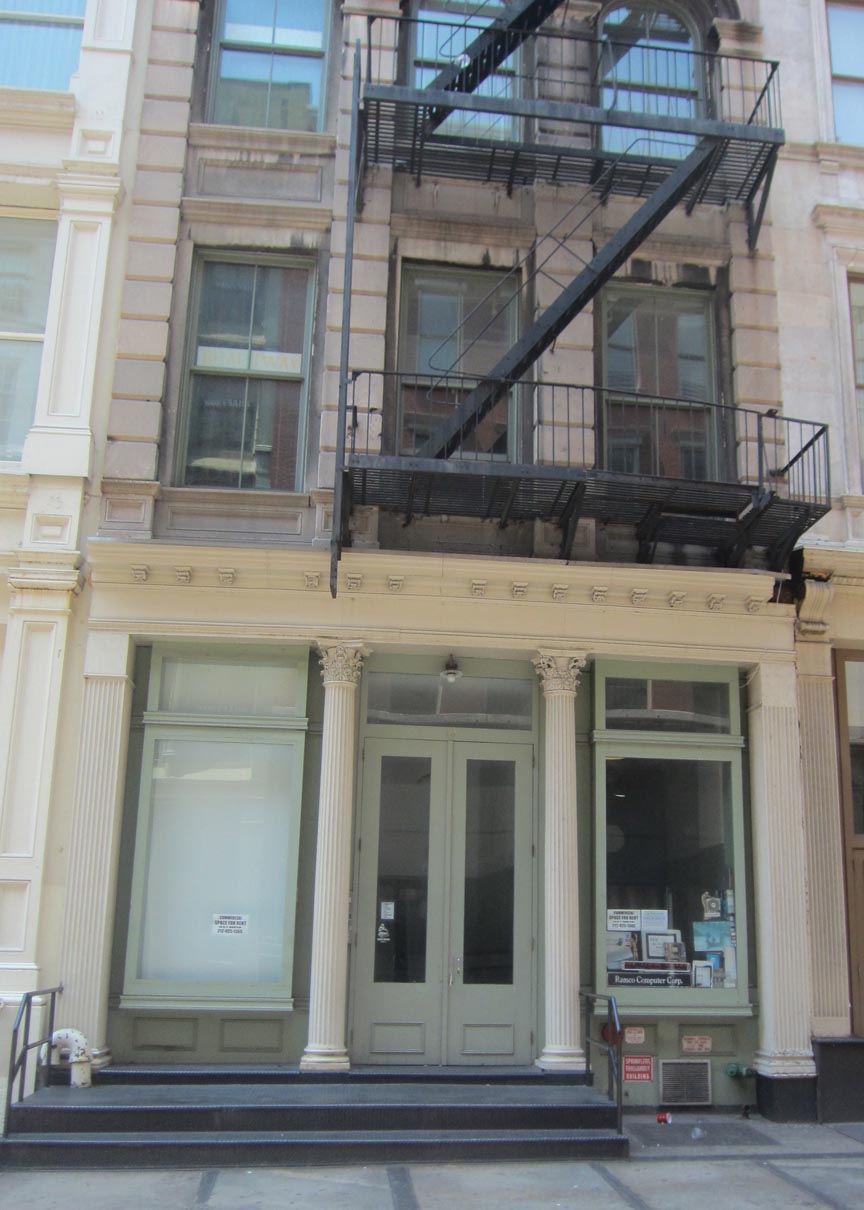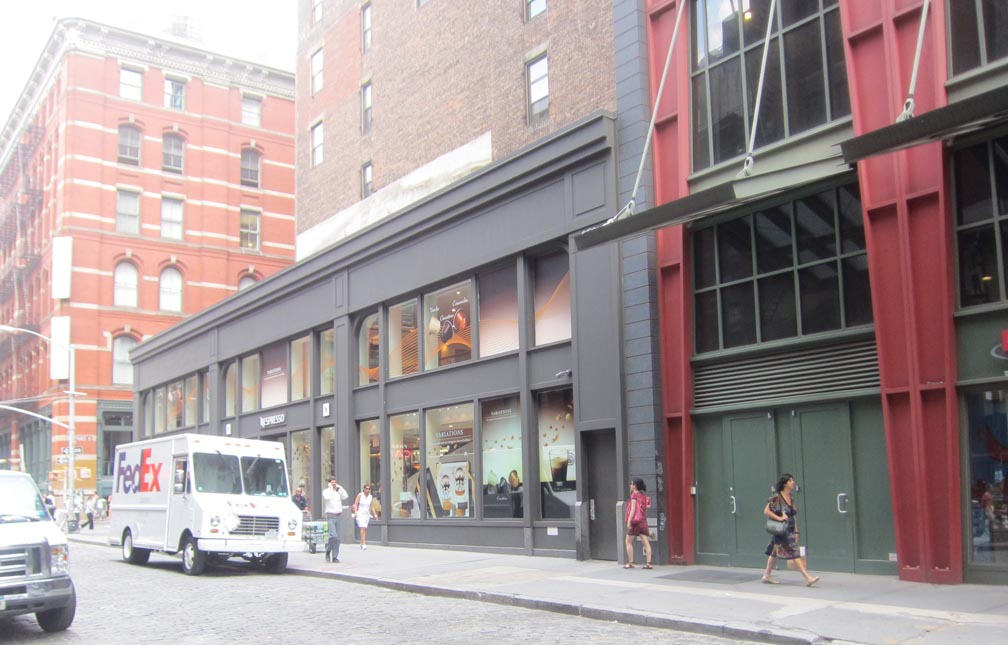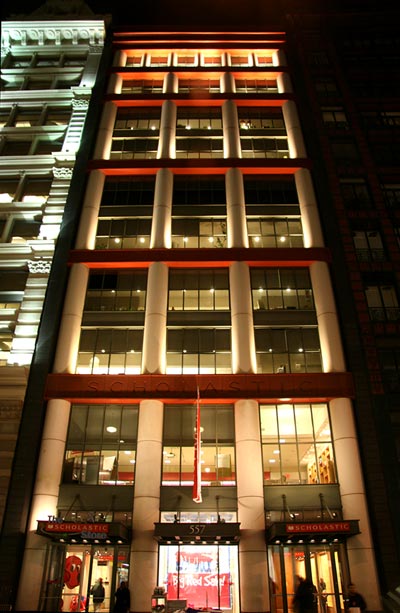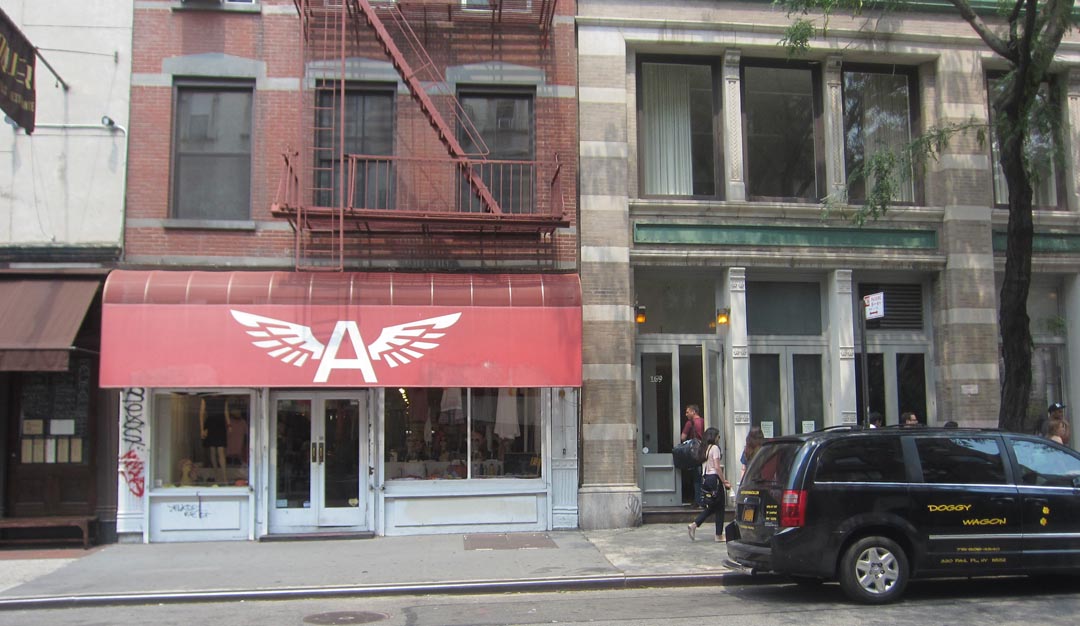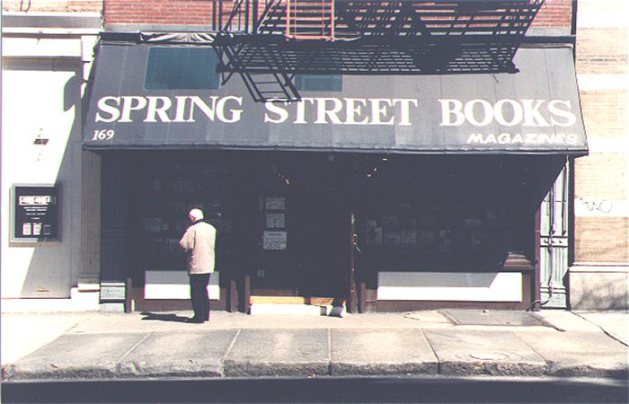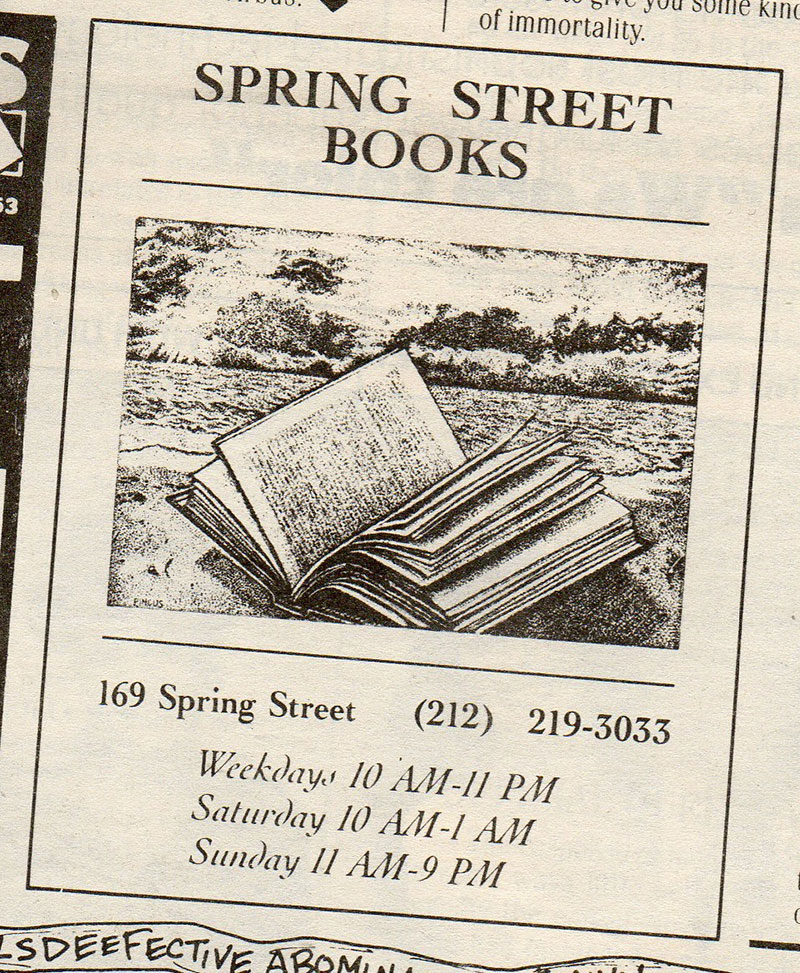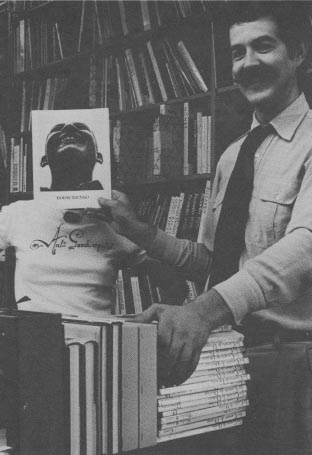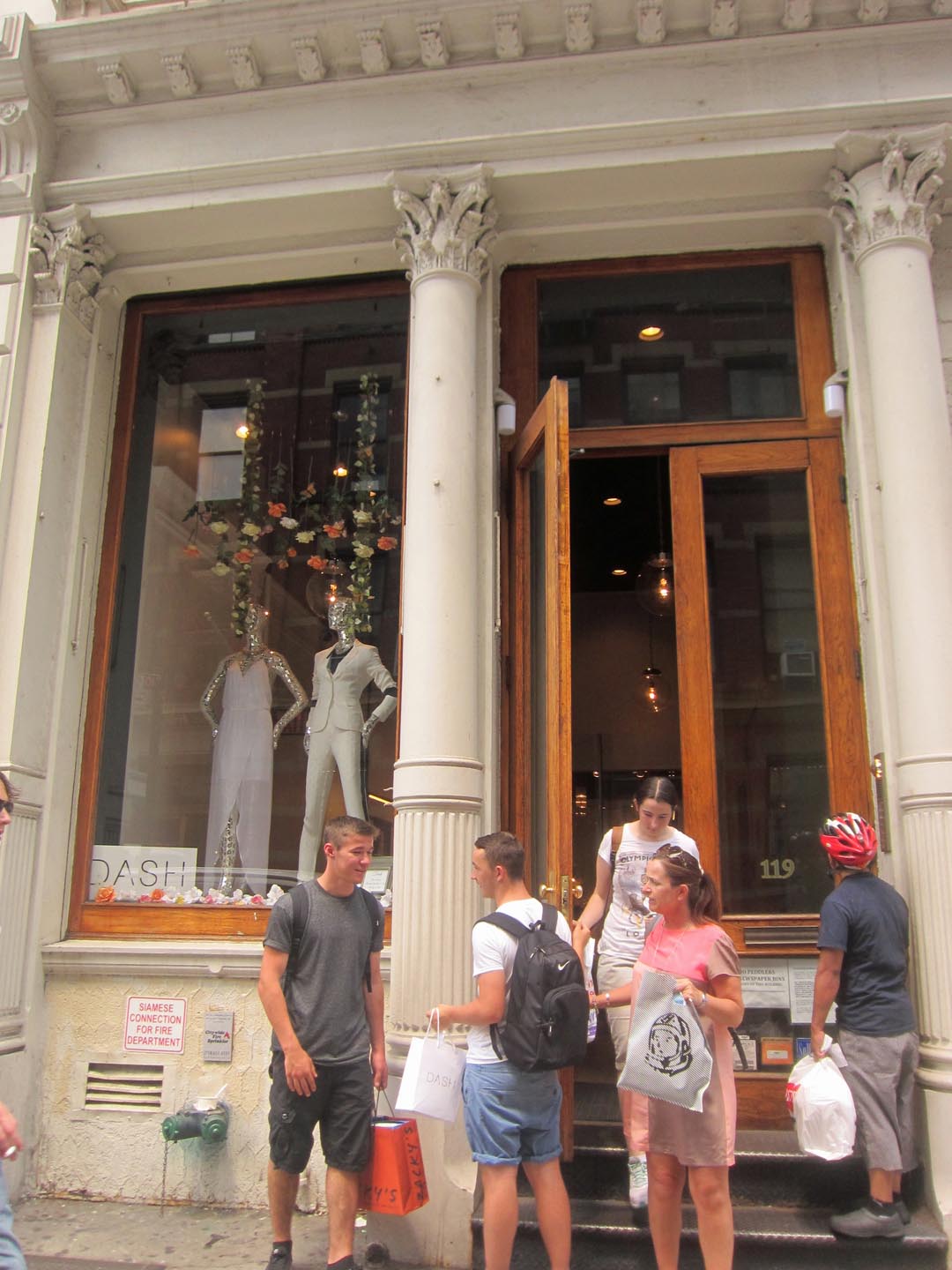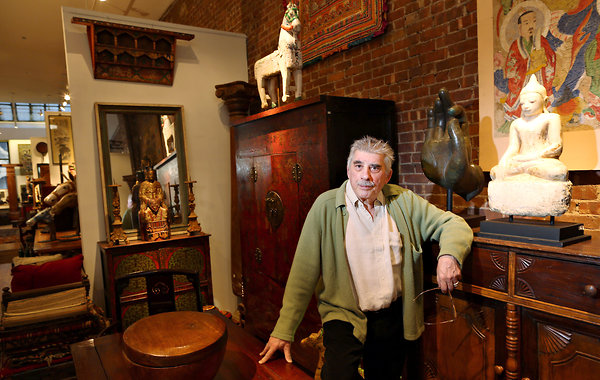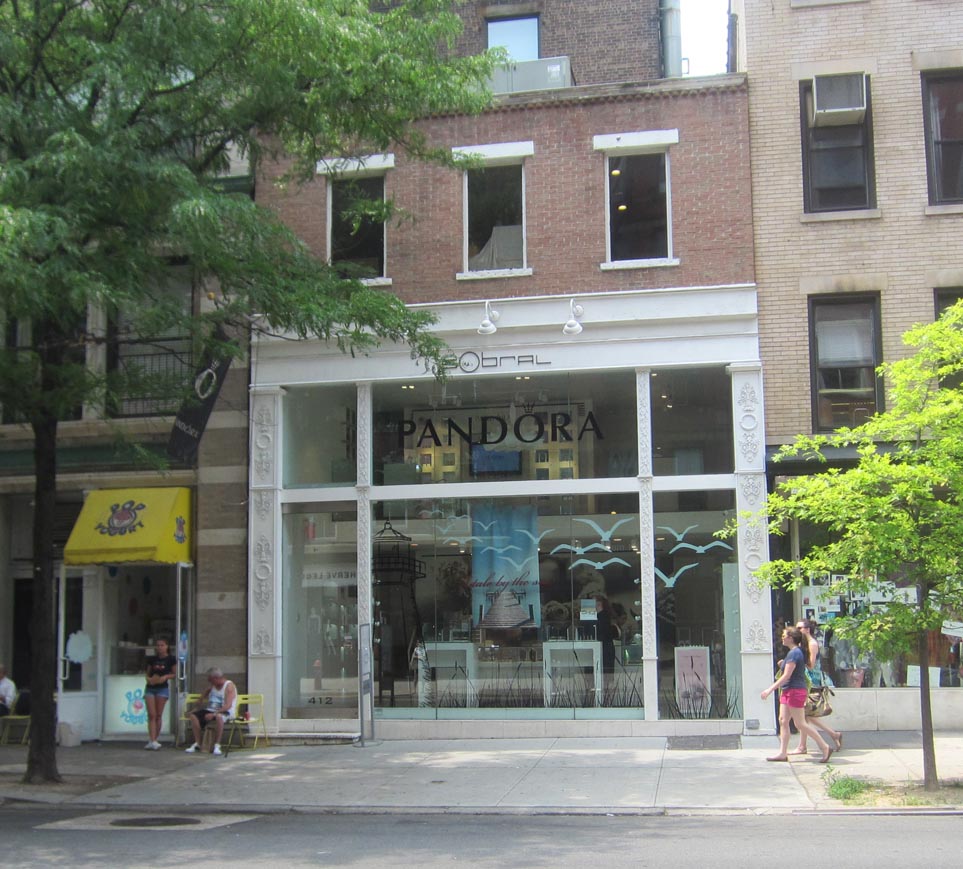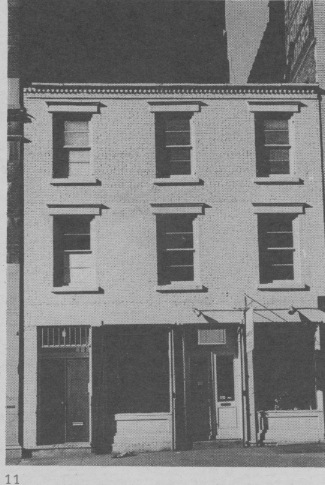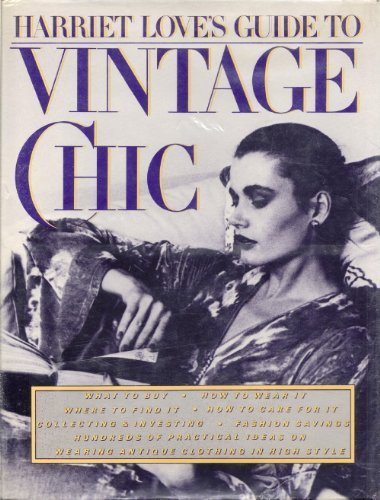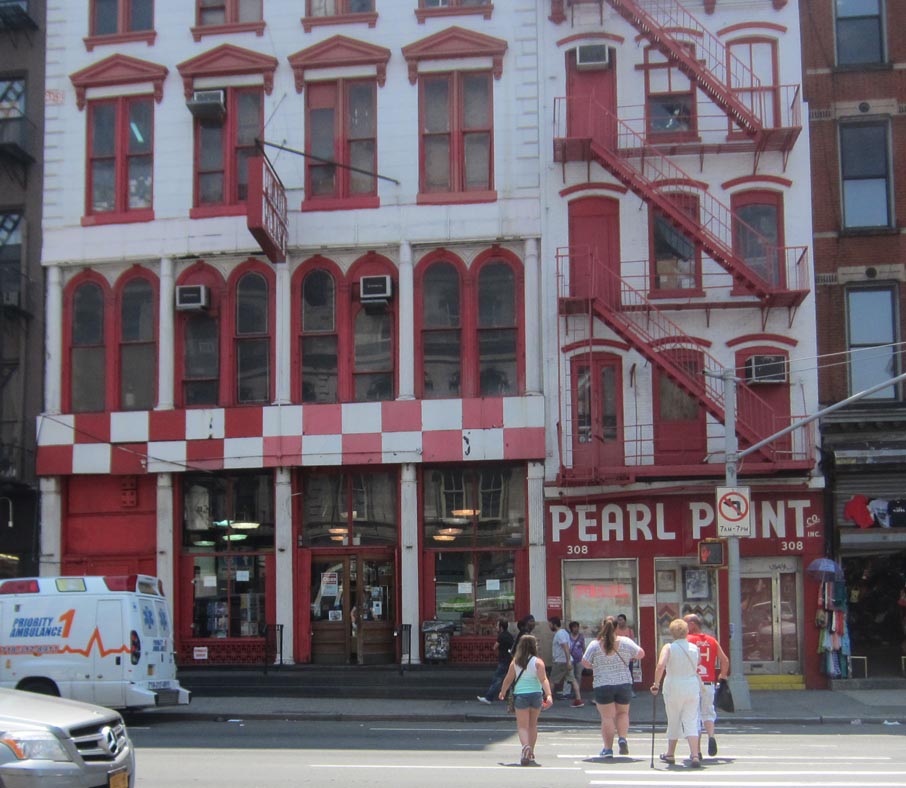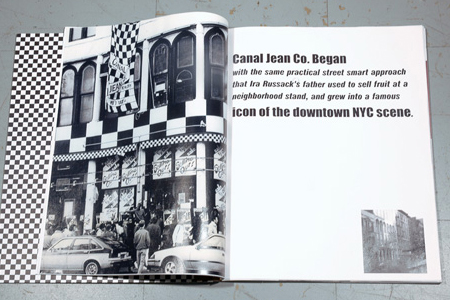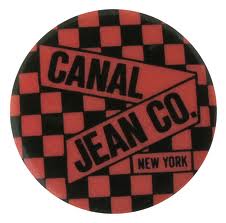More answers from the SoHo Memory Quiz! Where are these places? What used to be there?
FIREMEN’S HALL
N: Firemen’s Hall 155 Mercer Street (between Houston and Prince)
Firemen’s Hall, at 155 Mercer Street, is an 1855 building that has been stripped over the years of most of its features and details. In the early 19th century, fire fighting was done by an assortment of rival volunteer groups with no centralized director. This hall was built as a headquarters for two of thsse groups—a move toward cooperation amongst competitors. The upper floors housed a library, meeting room and reading room. In 1865 the volunteer system was replaced by a professional fire department and in 1885 a new headquarters was built on 67 Street, leaving Firemen’s Hall to become a regular firehouse for Hook and Ladder No. 20 until it closed in 1974 (Ladder 20 is now on Lafayette between Prince and Spring). The building has since housed several arts organizations, most recently The Joyce SoHo, until this year when Thor purchased the building.
According to a recent article in the New York Times:
The new owner, Thor Equities, has an unusual opportunity. For all intents and purposes there is nothing left of the original building. Thor could propose a contextual cast-iron type structure of five or six stories, or a shiny modern structure of the same height. But the developer needs a special permit to allow retail on the ground floor, and a restoration of the original facade makes such a permit easier to secure.
Thus, in order to be able to put a store on the first floor, Thor will recreate the old brownstone facade, although the brownstone will actually be precast concrete so that they can put a store on the ground floor.
I moved in next door to Firemen’s Hall the year it ceased being used by firefighters. My parents remember hearing sirens when Ladder 2o got a call, but I was too young to notice. It will be interesting to see what Thor does to recreate the original facade, as there are no surviving photos of the building, only drawings.
FLEA MARKET
O: Parking lot at the corner of Canal and Greene Streets, former site of the flea market
This parking lot on the corner of Canal and Greene Streets used to turn into a rockin’ flea market on weekends during the temperate months.
From Anderson & Archer’s SoHo:
For $10, anyone can rent a plot at this parking lot and set up his very own table to sell cast-offs, old dime-store jewelry, tattered sci-fi paperbacks or other clutter too good or sentimental to throw out. And that’s what a lot of SoHo residents do. Though the majority are semiprofessional flea-marketeers, you can always tell when serious loft cleaning is underway by the number of local family garage sales taking place here on a single macadam lot. Lots of secondhand, vaguely ethnic clothing, some china, a stray ancient sewing machine and, now and then, a treasure or two can be had for flea-sized prices.
Browsing at the flea market (image: Anderson & Archer’s SoHo)
As a tween with not much to do on weekends, I used to wander around that flea market for hours, poking through piles of costume jewelry and bric-a-brac. I believe it was there that I developed my lifelong penchant for collecting tchotchkes, especially little frog figurines, that still adorn my shelves today.
SOHO REP
P: Former home of SoHo Rep at 19 Mercer Street
This is 19 Mercer Street, former home of the SoHo Repertory Theater that still exists today on Walker Street.
From The SoHo Rep website:
Founded in 1975, and in our theater on Walker Street since 1991, Soho Rep has built an outstanding reputation for being at the forefront of new and innovative theatre, serving as a vital center for contemporary theatre artists. We also successfully attract one of the youngest adult theater-going audiences in New York City with over 62% under the age of 40. Actors Kathleen Turner, Ed O’Neill, Allison Janney, John C. Reilly and Kevin Spacey made their professional debuts at Soho Rep, and the long list of illustrious Soho Rep acting alumni includes Steve Buscemi, Jonathan Frakes, Steve Mellor, Will Patton, Bill Sadler, John Seitz, Tim Blake Nelson, Margaret Whitton and Frank Wood. Many of our Mainstage productions have emerged from our new play development and commissioning programs, often resulting in artistically lauded productions. Since 2000, Soho Rep and our productions have garnered eleven OBIE Awards, six Drama Desk Nominations, the Oppenheimer Award, Kesselring Prize, and The New York Times Outstanding Playwrighting Award.
I only know SoHo Rep by its “rep,” never having seen a performance in the Mercer Street space.
EMPTY LOT/BROADWAY LUMBER
Q: The Nespresso Store at the corner of Mercer and Prince, where a parking lot and Broadway Lumber used to be
This photo of Mercer Street looking northeast toward Prince Street shows the recently constructed two-story building that now houses a Nespresso store next to the also recently-constructed Scholastic Building. For years and years before these two buildings went up, there was an empty lot (or a parking lot?) on the corner next to a one-story garage building that housed Broadway Lumber (the building went through the block to Broadway).
The Scholastic Building at 557 Broadway (source: New York Daily Photo)
These two new structures are examples of “industrial” style buildings that have gone on empty lots around the neighborhood, designed to complement the existing cast iron architecture.
A description of the Scholastic Building from New York Daily Photo in 2007:
Scholastic, established in 1920, is the world’s largest publisher of children’s books. They have a large presence in this area, occupying a number of buildings. …The structure was built from scratch on a site which was home to a parking lot and a one-story building (Broadway Lumber), taking six years to complete. The design, with its white half-columns, spandrels, and rust-red I-Beams, is quite striking; “the building’s columnar Broadway facade, in steel, terra-cotta, and stone, echoes the scale and the formal, Classical character of its commercial neighbors.”
SPRING STREET BOOKS/JAAP REITMAN
R: The former location of Spring Street Books and Jaap Rietman
This block on Spring Street between West Broadway and Thompson was once home to two old-time SoHo booksellers. Spring Street Books, located at 169 Spring that now has the red awning, was a general interest bookstore.
I found this November 14, 2007 post on the Lost City blog about the proprietors of the shop:
Many years ago, I worked at Spring Street Books, an independent book store in Soho that was run by misanthropic, mumbling troll named Izzy whose paranoid, irrational edicts were enforced by a shifty toady manager named Jim. The shop was beloved by locals, but to the staff it was a den of misery.
If anyone out there cares to corroberate or contest this account, please do so.
Spring Street Books (photo: Bob Edelson source: sohobooks.net)
(source: Ephemeral New York)
In the end, it seems that the bookstore was edged out by rising rents in SoHo, according to this November 15, 1998 New York Times article:
Certainly, Spring Street Books, an institution for 15 years, is showing the classic symptoms of a store in trouble. On at least one day last week, handwritten signs advertised 70 percent off all stock, cash only. The shelves at the store, between West Broadway and Thompson Street, are largely empty. A suit filed in Civil Court provides further evidence of financial distress, with the store’s landlord, SoHo Suppliers, seeking the store’s eviction and claiming rent arrears of two months at the rate of $13,500 a month.
Jaap Reitman in his store (image: Anderson & Archer’s SoHo)
Right next door to Spring Street Books there was Jaap Rietman at 167 Spring Street, on the second floor. Opened by the store’s Dutch namesake in 1973 (originally at street level), Reitman was a bookseller in the true tradition. Apprenticed at 19 to a bookstore in Holland, he worked his way to New York where he opened his own store, as described in the New York Times in 1988:
…this book-lover’s heaven – comfortably ensconced in a no-frills loft – is already a downtown institution. Strong on European art and architecture books and catalogues, it carries some 15,000 current titles, with 20th-century emphasis but a reach back to the Renaissance. The books, shelved or on tables, are easily accessible, and Jaap Rietman himself might help you find, say, Alain Merot’s monograph on the 17th-century Baroque painter Eustache LeSueur, for $125, or some Vintage softcovers on LeSueur’s 20th-century colleagues, Eric Fischl, David Salle and Francisco Clemente, for $9.95 apiece.
Jaap Reitman held on in SoHo for 23 years until 1996, when he closed his Spring Street store. I have no idea where he went or what is there now. Does anyone know?
JACQUES CARCANAGUES
S: DASH on Spring Street was once where Jacques Carcanagues has his store
Now the home of DASH, the Kardashians’ much visited SoHo store, 119 Spring Street (between Greene and Mercer) was where Jacques Carcanagues set up shop in the 1970’s after first running his business from his loft on West Broadway for a few years. He later moved to 21 Greene Street and sold kilim rugs, Nepalese silver bracelets, Tibetan turquoise, Afghani textiles, thus bringing the world to SoHo. In a recent interview he spoke about starting his business 40 years ago:
Little by little I added rugs and furniture and objects and I had more countries on the list. In the beginning I started with North Africa and then I went to India. I went to Afghanistan, Thailand, Nepal, Indonesia. I was one of the first ones to go to Indonesia. And then I stopped because everyone was going there. Then I went to Japan, Korea, China. We were importing at least one or two containers a month.
WORLD TRAVELER Jacques Carcanagues is to close his gallery of exotica in SoHo at the end of February, after 40 years (image: Robert Caplin for The New York Times)
After four decades, Carcanagues recently closed up shop and is probably watching the sunset from his balcony in Morocco at this very moment. He was old SoHo and so when he retired it seems he decided to get as far away from new SoHo as possible.
HARRIET LOVE
T: Former site of the store Harriet Love at 412 West Broadway between Spring and Prince
412 West Broadway, a ca. 1825 two-story brick building as it looked pre-renovation[/caption]
The facade of this building at 412 West Broadway that now houses Pandora, a jewelry store, has been renovated extensively since it was home to Harriet Love. Love, after inheriting the extensive wardrobe of a family friend, opened a store on 13th Street where she sold hand-picked vintage clothing, something unusual in the mid-60’s. Once retro clothing came into fashion, she moved her store to West Broadway where she cultivated her sought-after stock, as described in People Magazine:
At first she stocked her shop by traveling to country auctions and buying from “anyone who would contact me. It was very mysterious and wonderful,” she says. “I met one woman on the Connecticut Turnpike. It was freezing and so dark I needed a flashlight to see the clothes in the trunk.” Since good sources are the key to her business, Love is close mouthed about most of them, worried that they might dry up. Still, she believes the U.S. has a lot to offer.
“We’ve never had a war on our shores,” she says, “never had homes and factories destroyed. Everything that’s been here is here.”
Harriet Love’s book about vintage chic
Harriet Love later moved to 126 Prince Street. She also wrote a book about her passion for vintage clothing entitled Harriet Love’s Guide To Vintage Chic.
CANAL JEAN CO.
U: Pearl Paint on Canal, formerly Canal Jean Co.
These two buildings now comprise Pearl Paint, the mega art supply store that has seemed to be going out of business for year snow, with only half-stocked shelves and spotty inventory. Back in the day, the larger of the two buildings, the one with the red and white checkers, was the original location of Canal Jean % Co., hence the name, and the checkers were black and white. Opened in 1973, Canal Jean moved off Canal Street to Broadway where they expanded to several floors. They sold, well, jeans, as well as dyed t-shirts, vintage clothing, army gear, and with every purchase gave away buttons with their logo on it that were “brandished” on every jean jacket and backpack of a certain downtown set, mostly teenagers (I was one of them!). They have long since moved to Nostrand Avenue in Brooklyn, but are still around.
The facade of the original Canal Jean on Canal Street (image: Coroflot)
The infamous and much collected Canal Jean button
From the NYC Tourist site:
Serving as a New York landmark since 1973, this trendy thrift shop has been praised by many for awesome prices to fit urban wardrobes. Always advertising their notorious checkerboard logo, this hip, fashionable galleria caters to men, women and children offering eclectic threads for the NYC bargain shopper. Serving as the city’s largest selection of jeans, The Canal Jean Company provides New York City shoppers with hundreds of different styles and name brands of jeans that are sure to fit every New York shopper.
If I miss any SoHo shop, it is Canal Jean. More than a store, it was an institution that, like Astor Hair, defined my adolescence, or at least styled it.


